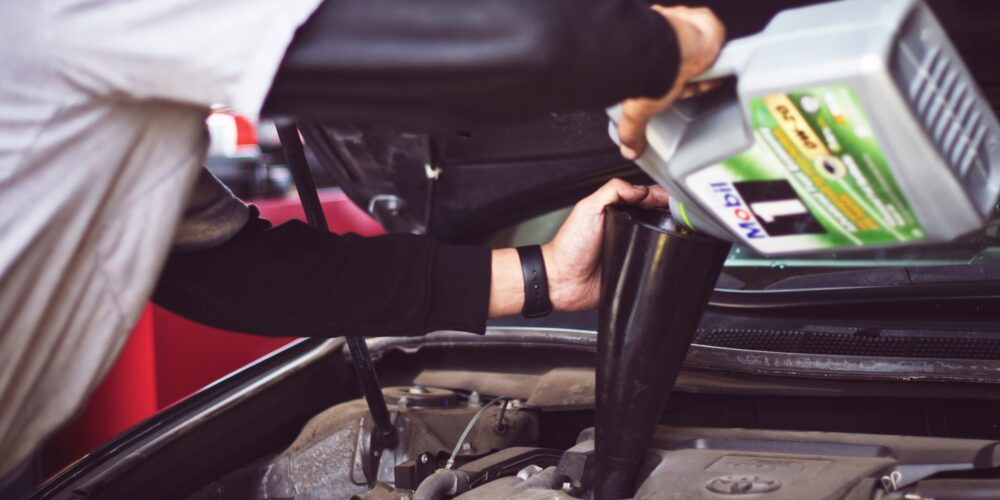If you’ve walked up to your vehicle and noticed a suspicious puddle underneath, chances are you’re wondering what it is and whether it’s anything to worry about. When your car seems to have sprung a leak, it can be distressing but having some idea of what you’re looking at can help you act accordingly. If you’re unsure whether the leak is serious and in need of immediate attention or if it’s nothing to worry about, it’s always best to have your car checked by one of our qualified mechanics, but we’ve compiled this guide to help you determine just what could be leaking and what it might mean.
Clear Liquid
If your car is leaking a clear, water-like liquid, it is probably exactly that. Coolant can also seem clear but usually has a coloured tint to it, so if the leak is completely clear, it could just be condensation from your air con unit or even from the exhaust, particularly during cooler weather. If you use clear liquid in your windscreen wash reservoir, this could also be leaking. Check the cap to make sure that is it securely in place. This is usually nothing to worry about but it may still be worth having your car checked over to make sure there isn’t a more serious issue to be seen to.
Red Liquid
If your car seems to be leaking red fluid, this will typically mean that you have a transmission fluid issue. If you’ve found the fluid at the front or middle of your vehicle, this could be a serious problem that needs resolving immediately. We advise against driving your vehicle if you see red liquid, as this could put you and others in danger if there is a transmission fluid problem. It could cause further, irreparable damage and even lead to breakdowns or poor or dangerous running of your vehicle. If you see red liquid, it’s crucial to get your gearbox looked at as soon as possible – a transmission fluid leak could be a sign of broken seals and cracked lines, or even failing gaskets. Our team are experts in all kinda of gearboxes, from standard, to DSG, Powershift, CVT and more.
Multi-Coloured Liquid
If your liquid leak is multi-coloured and looks like an oil slick, it’s likely that your mystery liquid is petrol or diesel. Both of these liquids have strong smells too, so if you can smell fuel, it’s likely to be what you’re looking at. If your car is leaking fuel, this could be an issue with fuel tank, usually a crack or damage that needs repairing ASAP. Don’t drive your car – any spark could cause the fuel to ignite and can, of course, lead to fires and permanent damage. Having your fuel tank fixed as soon as you spot the problem will ensure that it is done quickly and efficiently.
Black/Brown Liquid
Black or brown liquid leaks are likely to be engine oil, and you can test this by feeling the spillage. If it feels thick and is difficult to get off of your fingers, it is likely to be engine oil. Locating the leak should be easy, however the cause will determine whether you need to bring your car in immediately or whether it’s just a valve cover that needs replacing. Small oil leaks can be driven in an emergency short-term however we do advise that you bring your car in for repair as soon as possible. If it’s more than a few drips, this could be a sign that something more serious is going on and could need replacement gaskets, pipes, engine repairs and more.
Brown Liquid
If your car is leaking a slippery, brownish liquid, this could be brake fluid and will need to be seen to as soon as possible. The fluid will typically be round around the wheels and around the brake areas and should always be repaired before you even start up your up your car. If you’re seeing brake fluid, this could mean a problem with the brakes, which may make it impossible to control the car on the road. You should get your vehicle recovered to your local Service4Service garage for diagnostics and repairs as soon as possible.
If you are unsure on the liquid you’re looking at under your car or you’re in need of car repair to fix any escaped fluids, we are on hand to help. Simply get in touch with a member of the Service4Service team for more information, today.

